blog
Interview with photographer Justin Quinnell
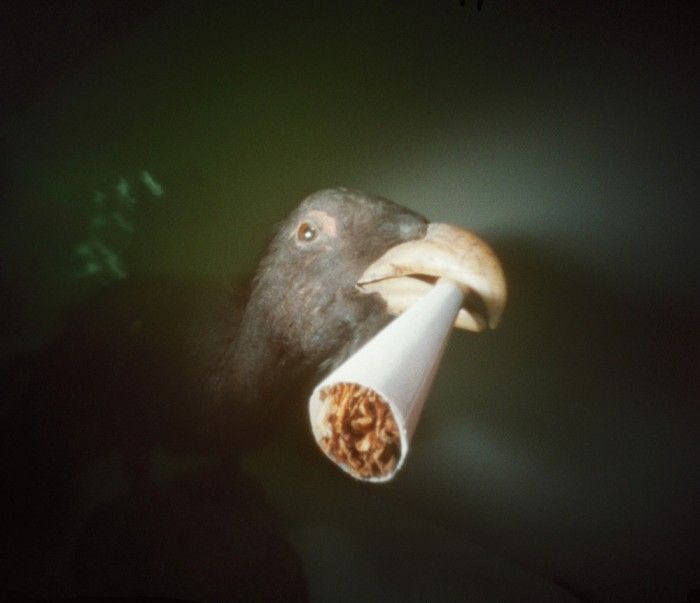
If you are looking for a gift idea for youngsters, photographer Justin Quinnell has one for you. An expert on pinhole cameras, Justin’s enthusiasm is quite contagious. Interviewing him was a pleasure as he is both knowledgeable about pinhole photography and he has a delightful sense of humor that comes through in his responses.
Yvette Meltzer: Can you tell us how you explain the pinhole camera process to youngsters?
Justin Quinnell: I start with ‘what is light?,’ ‘where does it come from? and what does it do?’ Then I go on talking about inverted images and, when they start nodding off, I put an I-scura on their heads to see an inverted image! (The I-Scura pinhole camera has been designed by photographer Justin Quinnell to look like a giant human eye, which can be worn on one’s head.) It’s then party time with making and using pinhole cameras until a caretaker comes along at the end of the day and says, “Were closing in five minutes.”

I-scura
YM: What advice would you give others who would be interested in introducing pinhole cameras to children?
JQ: Go for it. Best to begin with a beer can camera and do a long exposure to scan, then start using chemicals. Always make the camera though rather than buy a ready made one.
YM: What do you mean by “a long exposure to scan?” What is being exposed? Can you give us more information on this process?
JQ: No problem Yvette, they are the most fun! I once had someone inquiring as to whether pinhole photography “was a bit infantile for our students”. When it comes to “do a long exposure to scan” what happens is that the photo paper in the can is exposed for so long that a latent image appears. That is, the silver in the photo paper goes dark when light hits it, rather like getting a sun tan. If this was developed it would go black so to ‘capture’ the image the latent image is scanned on a scanner, creating a digital and therefore stable image to make into the final positive. The negative ‘latent’ image is then put into a black plastic bag. If it was left out in daylight the rest of the photo paper would darken thus removing any image. The 6 month exposure video shows all of this and may be viewed at https://www.youtube.com/watch?v=wtZOWEB_wcI&feature=youtu.be
The beer can camera construction and darkroom (using chemistry) is shown at https://www.youtube.com/watch?v=Hp-JMGQUAMA
There is also a sheet with rough exposure times at: http://www.pinholephotography.org/Beer%20Can%20construction.htm which has rough exposure times.
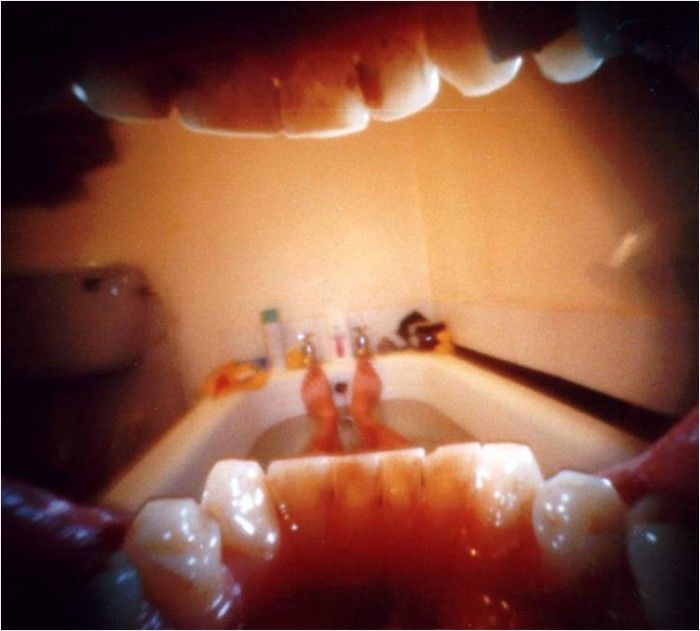
Bathtime
YM: Do the students stay engaged over the length of the long exposures–like recording the sun’s movement over 6 months or more that their pinhole camera is in position for a longitudinal photo? Do you have to do anything to keep them involved?
JQ: I think kids love the idea that they know about something their parents are confused by! I also forewarn their teachers to let them know when the time is coming up to take the camera down. As long as the camera is installed the image will (usually) work so I’m happy if they forget about it for 6 months. One thing I like about the 6-month cameras is that they involve all the family as well as everyone who visits the garden the camera is placed in.
YM: You mention the importance of controlling the variables. How will using a different size can affect the exposure time?
JQ: The exposure time is exactly the same as both cans have the same diameter so the same pinhole to film plane distance. The diameter of the can only matters if you are teaching groups. If someone has a small ‘red bull’ can and another person a larger diameter drink can, the exposures will be different. If everyone’s can has the same diameter then the exposures will be the same for everyone.
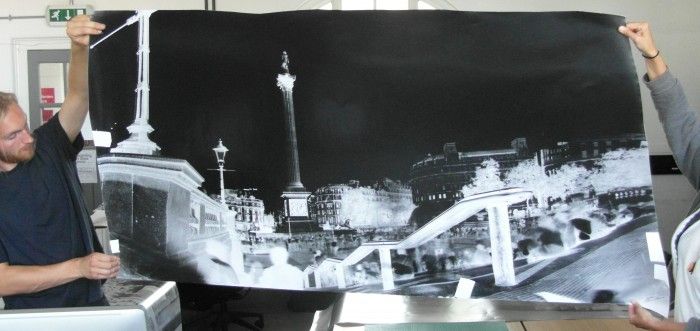
Nelsons column Negative
YM: Do parents ever object to their children handling beer cans?
JQ: Being honest, I’ve never had any problem in the UK but you could say aluminum drink cans and cover all the bases of parental- school teacher angst!
YM: What would be a good substitute if parents did object?
JQ: Coke cans or energy drinks will work just fine.
YM: I viewed your YouTube video https://www.youtube.com/watch?v=Hp-JMGQUAMA It appears that the beer can in the UK is larger than the standard size beer can in the US. You also mention the importance of the internal diameter of the can. Is there a can you recommend for use in the USA?
JQ: True that UK beer cans are larger than in the US, although ‘energy drinks are the same size, not sure what is worse for kids, energy drinks or Coke! It is fine to use soft drink cans such as coke etc. Because they are a bit shorter you will have to trim the photo paper down a bit in the darkroom. They are also a bit shorter so they don’t get as much ‘altitude’ in the pic. This really only has an effect in capturing the very high midsummer sun. If you want to stress that all aluminum cans will work, then that’s fine.
YM: Have any of the children come up with original ideas of what they can use as a pinhole camera?
JQ: I have had a few great comments such as “Where does the memory card go?” and “What if something happens?” As for cameras, I usually stick to the beer can camera as it irons out all of the variables so we get a 100% success rate. Sometimes we have time to make different cameras. We made a Barbie horse pinhole camera recently and a few weeks ago had a great time trying to make pinhole cameras out of red colored wine gums. (I have a fondness for edible cameras!)

Barbie horse pinhole camera
YM: Do you use any other camera formats?
JQ: Everything from 110 cartridge pinhole cameras (which fit in my mouth) to giant waste bin sized cameras (which don’t!). I also use adapted 35mm, DSLRs, Pringles tubes with 10 x 8 film, all sizes of photo paper, 120, etc etc. I also have a small (fairly rubbish) digital camera which I use to take photos of family and a 33 year old Pentax MX I use with a 24mm Tamron lens to do 4 hour exposures!
YM: What defines a good photograph to you?
JQ: Kittens. Oh, ok, maybe not. I think my interpretation of a good photograph is any image that makes me feel stuff. I appreciate all kinds of photography but admire people who use their minds to photograph rather than relying on viewfinders. Being a “pinholer” I look for something that has never been seen in that way before. I also like photos that make people laugh. One hassle with photography is it has over-embraced ‘miserablism’, the idea that if it’s funny it’s not art, which is a shame. Anything opposing that, making people smile is fine by me. I also like the crossover between science/art and combinations of old/new technologies. The list goes on.
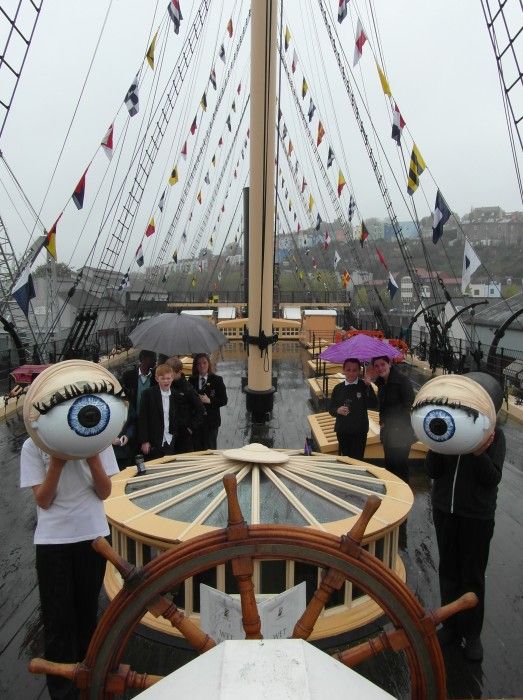
eye eye captain!
YM: Have any of your students gone on to pursue photography as a career?
JQ: I think so, more importantly I hope they pursue life!
YM: You speak of play, inspiration, wonder, magic…is there any other medium besides photography that fuels your sense of wonder?
JQ: Science, astronomy, cycling, nature and birds, beer, ceramics, football, graffiti, ceramics, sculpture, music. I sang in a punk band many years ago but I was rubbish.
YM: And do you lead any workshops for adults?
JQ: I do quite a few workshops for adults at universities or science centers etc. I also teach educators how to teach others – whether at schools or colleges. In fact, I’m currently sitting in a pub in Cheltenham about to do a lecture to 100 people at the local camera club (but currently hiding so I can clear my emails!) Age doesn’t really come into it.
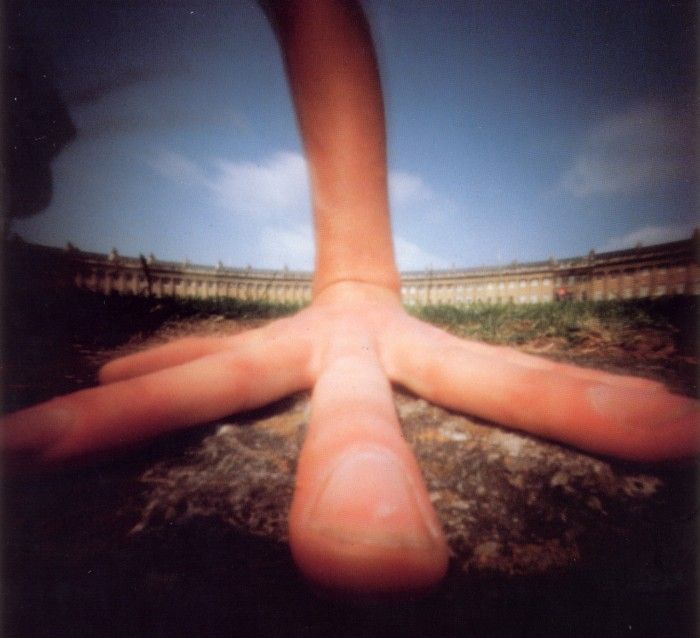
YM: Are you inspired by any other photographers or other artists?
JQ: John Blakemore, Jaques Henri Lartigue, Bethany De Forest, Paolo Gioli, Wayne Belger, Dominique Stroobant and all pinholers before the internet proved they weren’t mad! Andy Goldsworthy, Richard Long, Banksy, Epoc, Zase and all graffiti artists in Bristol.
YM: Are you familiar with the camera obscura projects of Abelardo Morrell? I thought you would mention him. I ask because you didn’t.
JQ: He is fantastic and we do share a few words from time to time. I use a lot of his work in my lectures especially the obscura tent images. Do put him down as one of my faves!
YM: I have read that environmental issues are important to you. Can you comment on this for our audience in the context of creating photography with pinholes.
JQ: I have been a member of the Green Party in the UK for 26 years and stood for Parliament several times (never won though!) I got involved the same time as I got disillusioned with photography doing harm to the world. I was a travel photographer and used to photograph in Turkey. Within a few years the hotels and tower blocks had appeared, as did a lot of social problems due to tourism. Discovering pinhole photography and its completely non-commercial DIY approach suited me. (as did the average beer can pinhole camera costing $50,000 less than a Hasselblad H5D 200c!
YM: Do you have any other advice based on your experiences?
JQ: Do stuff and be bothered. I tell my students there are only two things you can do in life. Be bothered or do not be bothered. The latter isn’t worth it! Also there are loads of people slagging* people off so don’t listen to what other people think or say unless they are nice! *British slang meaning to criticize, disparage, or insult
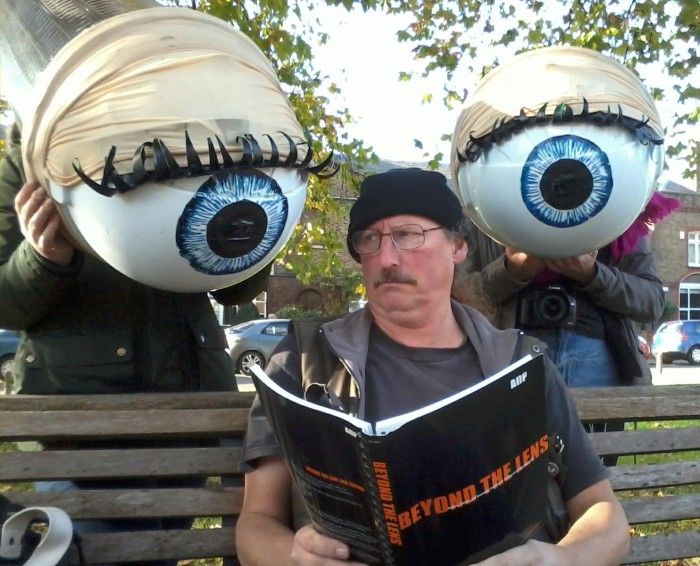
Beyond the lens
YM: What is the best career advice you have ever received?
JQ: Remember when to shut up!
YM: Anything else you would like to tell us?
JQ: World pinhole day is on Sunday the 26th of April. (Which is also my birthday!!!!) Be part of something huge (through something very small!) www.pinholeday.org
Thanks for your responses, Justin.
For more pinhole info on Justin, his workshops, lectures, obscura kits and prints, visit www.pinholephotography.org – and remember to send him a birthday card on World pinhole day.
Location: Online Type: Interview
One response to “Interview with photographer Justin Quinnell”
Leave a Reply
Events by Location
Post Categories
Tags
- Abstract
- Alternative process
- Architecture
- Artist Talk
- artistic residency
- Biennial
- Black and White
- Book Fair
- Car culture
- Charity
- Childhood
- Children
- Cities
- Collaboration
- Community
- Cyanotype
- Documentary
- Environment
- Event
- Exhibition
- Faith
- Family
- Fashion
- Festival
- Film Review
- Food
- Friendship
- FStop20th
- Gender
- Gun Culture
- Habitat
- Hom
- home
- journal
- Landscapes
- Lecture
- Love
- Masculinity
- Mental Health
- Migration
- Museums
- Music
- Nature
- Night
- nuclear
- p
- photographic residency
- Photomontage
- Plants
- Podcast
- Portraits
- Prairies
- Religion
- River
- Still Life
- Street Photography
- Tourism
- UFO
- Water
- Zine

[…] “[M]y interpretation of a good photograph is any image that makes me feel stuff. I appreciate all kinds of photography but admire people who use their minds to photograph rather than relying on viewfinders.” Justin Quinnell in conversation with Yvette Meltzer • F-Stop […]